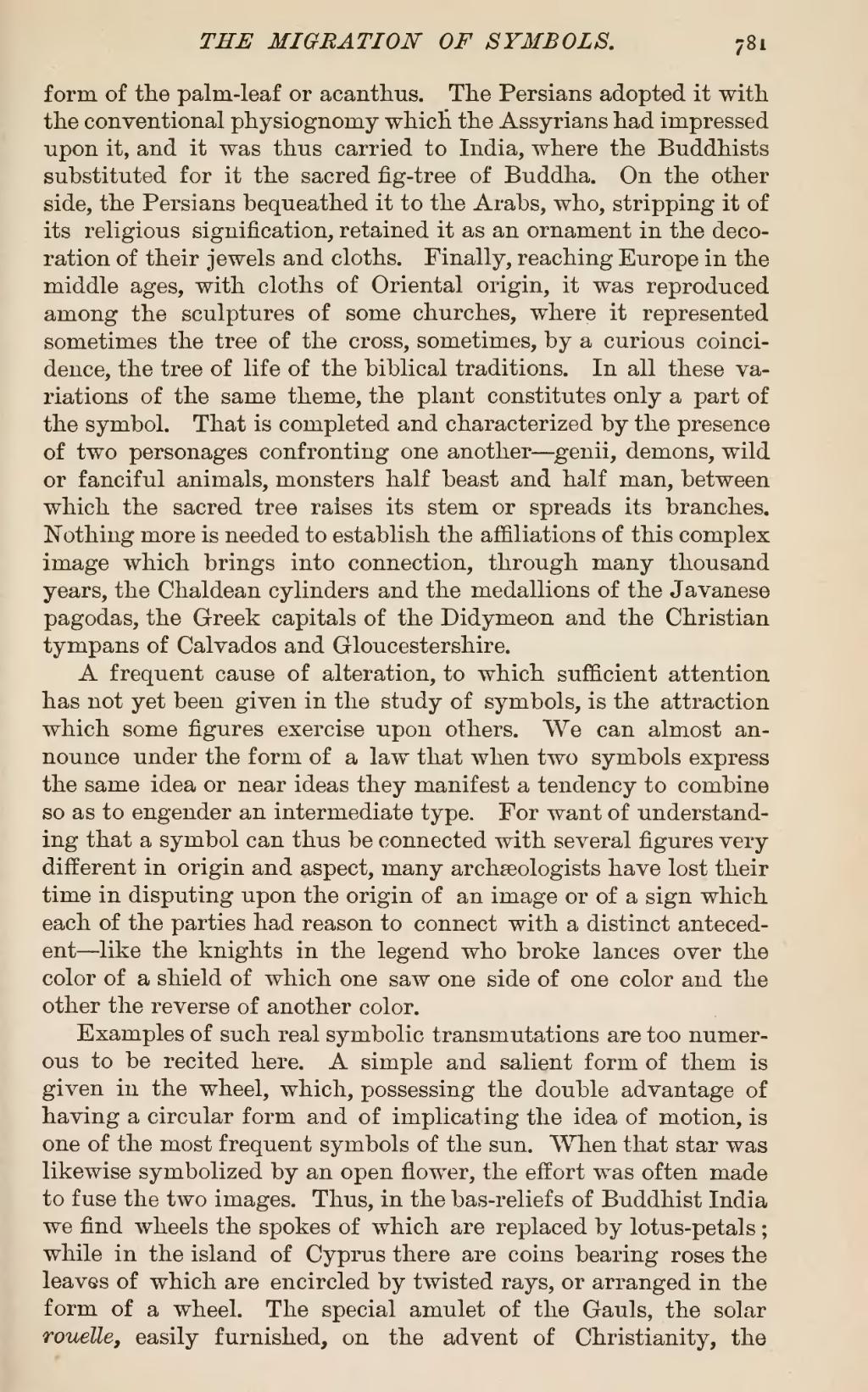form of the palm-leaf or acanthus. The Persians adopted it with the conventional physiognomy which the Assyrians had impressed upon it, and it was thus carried to India, where the Buddhists substituted for it the sacred fig-tree of Buddha. On the other side, the Persians bequeathed it to the Arabs, who, stripping it of its religious signification, retained it as an ornament in the decoration of their jewels and cloths. Finally, reaching Europe in the middle ages, with cloths of Oriental origin, it was reproduced among the sculptures of some churches, where it represented sometimes the tree of the cross, sometimes, by a curious coincidence, the tree of life of the biblical traditions. In all these variations of the same theme, the plant constitutes only a part of the symbol. That is completed and characterized by the presence of two personages confronting one another—genii, demons, wild or fanciful animals, monsters half beast and half man, between which the sacred tree raises its stem or spreads its branches. Nothing more is needed to establish the affiliations of this complex image which brings into connection, through many thousand years, the Chaldean cylinders and the medallions of the Javanese pagodas, the Greek capitals of the Didymeon and the Christian tympans of Calvados and Gloucestershire.
A frequent cause of alteration, to which sufficient attention has not yet been given in the study of symbols, is the attraction which some figures exercise upon others. We can almost announce under the form of a law that when two symbols express the same idea or near ideas they manifest a tendency to combine so as to engender an intermediate type. For want of understanding that a symbol can thus be connected with several figures very different in origin and aspect, many archœologists have lost their time in disputing upon the origin of an image or of a sign which each of the parties had reason to connect with a distinct antecedent—like the knights in the legend who broke lances over the color of a shield of which one saw one side of one color and the other the reverse of another color.
Examples of such real symbolic transmutations are too numerous to be recited here. A simple and salient form of them is given in the wheel, which, possessing the double advantage of having a circular form and of implicating the idea of motion, is one of the most frequent symbols of the sun. When that star was likewise symbolized by an open flower, the effort was often made to fuse the two images. Thus, in the bas-reliefs of Buddhist India we find wheels the spokes of which are replaced by lotus-petals; while in the island of Cyprus there are coins bearing roses the leaves of which are encircled by twisted rays, or arranged in the form of a wheel. The special amulet of the Gauls, the solar rouelle, easily furnished, on the advent of Christianity, the

